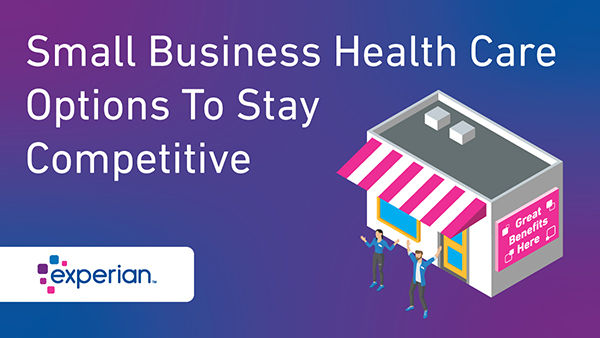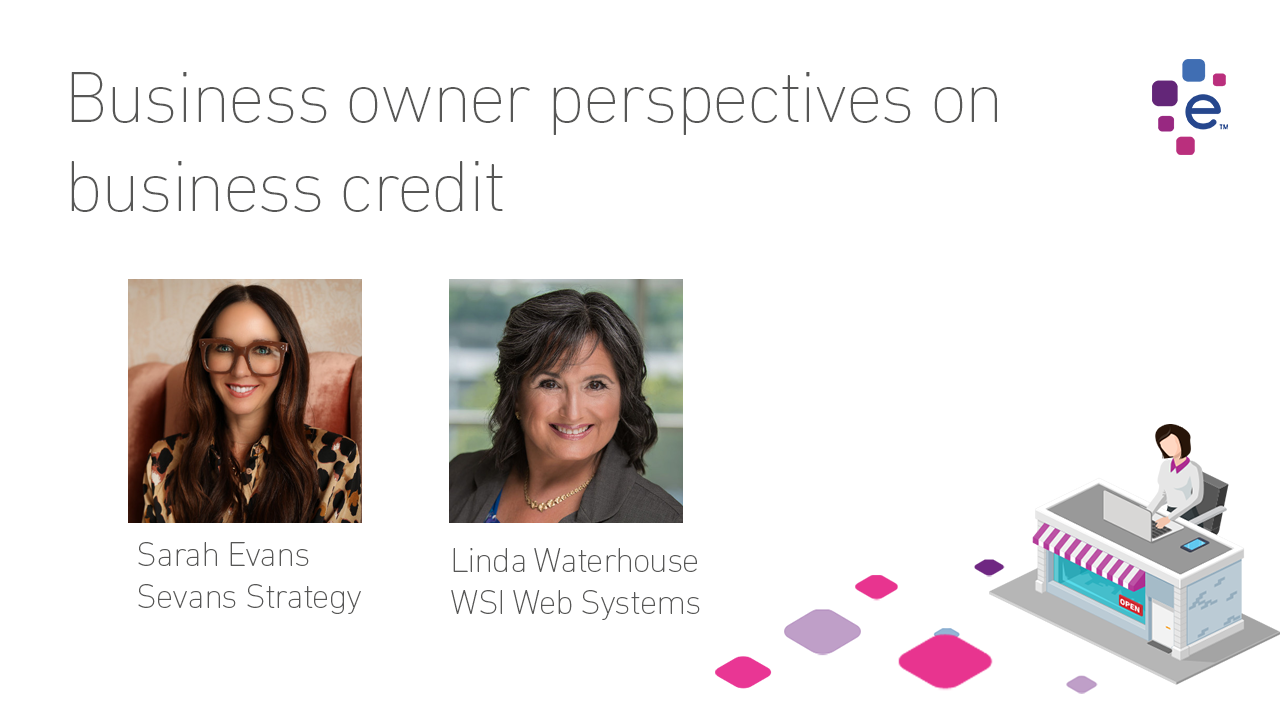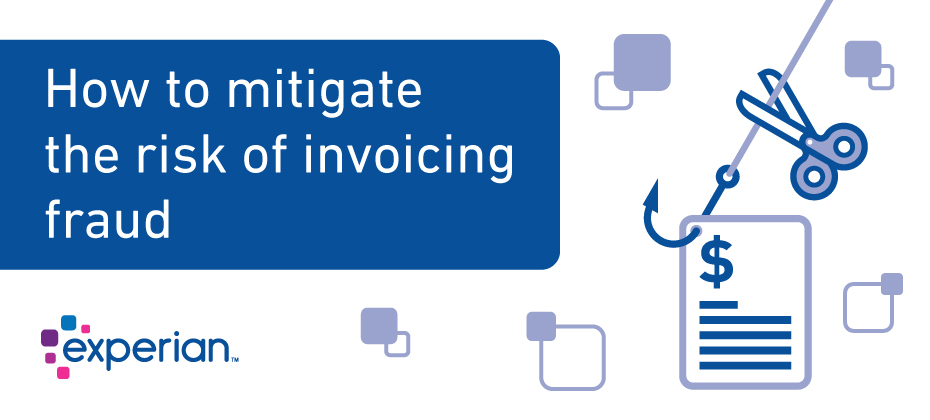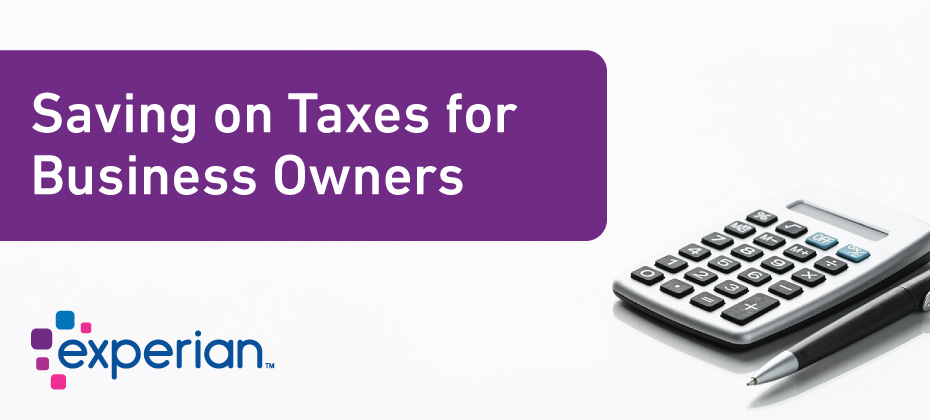All posts by Gary Stockton

Experian is partnering with the Federal Reserve to conduct its annual Small Business Credit Survey for both pre-start and existing businesses, and we’d like you to participate. This short survey will take approximately 10 minutes and will ask about business conditions, financing needs, and credit experiences. Summary results will be shared with you in the Spring, and all responses are confidential. The survey highlights the experiences of small businesses nationwide and provides critical information that service providers, policymakers, and lenders use to improve programs for small business owners. Please click the button below to complete the survey. Thank you for participating.

This week's guest post is by small business tax expert and best selling author, Barbara Weltman of Big Ideas for Small Business. Barbara shares ideas on how small businesses can remain competitive with health care benefits to attract employees in a tight labor market. With the cost of healthcare premiums rising, and a tight labor market, small businesses are looking at all options to attract employees, and benefits are one way to remain competitive. So, in this post I thought it would be timely to share some ways employers can deal with offering health coverage without breaking the bank. As P.T Barnham famously said “The foundation of success in life is good health,” so let’s start with a quick dose of reality then get down to the business of assessing your options for 2020 . It’s estimated that premiums for large employers in 2020 will be on average 5% higher than 2019 (statistics on premiums for small employers are not available). Small business owners are tasked with the challenge of offering health coverage to their staff that is within their budget. Fortunately, there are several ways for employers to deal with health coverage, and the tax law provides breaks to help defray the cost. Here is a summary of health coverage options and a brief discussion of the tax breaks that result. Employer mandate Despite repeal of the individual mandate, the employer mandate requiring certain employers to “play or pay” continues to apply. If you have at least 50 full-time and full-time equivalent employees, you are an applicable large employer (ALE) and must offer minimum essential health coverage that’s affordable (meaning the employee share of premiums doesn’t exceed a set percentage of their household income) or pay a penalty. In deciding whether to play or pay, keep in mind that the penalty amounts (there are different penalties) are increasing for 2020. And if you play, there are cost management initiatives—shopping around, increasing deductibles, using virtual care—to help keep premium costs down. Small employer options Even if you aren’t an ALE, small companies want to offer their employees health coverage. They want their workers to be healthy. And in today’s tight job market, health coverage is an important benefit, with the majority of employees saying that their coverage is a key factor in deciding whether to stay with the company. Here are some affordable options to consider: Health savings accounts (HSAs). If you offer employees a high-deductible health plan (HDHP), which is a low premium policy that requires employees to pay out of pocket up to their policy’s deductible before coverage kicks in. The HDHP is then combined with an IRA-like savings plan called a Health Savings Account (HSA). You can decide whether to contribute to an employee’s HSA or let the employee do so. If you make the contributions, they are tax deductible and as a tax-free fringe benefit are not subject to payroll taxes. Qualified Small Employer Health Reimbursement Arrangements (QSEHRAs). Instead of having the company obtain a group plan, a small employer (one that is not an ALE) can reimburse employees up to a set dollar amount for their individually obtained health coverage. Reimbursement limits for 2020 have not yet been announced. For 2019, they were $5,150 for self-only coverage and $10,300 for family coverage. Individual Coverage Health Reimbursement Arrangements (ICHRAs). Starting in 2020, employers of any size can reimburse employees for their personal health coverage premiums. The employer—not the government—sets the reimbursement limit. The ICHRA must be offered on a nondiscriminatory basis. And the arrangement must meet other requirements, including notice of the plan and verification of coverage by employees in order to receive reimbursement. Sounds similar to the QSEHRA, but there are some important differences. Excepted Benefit Health Reimbursement Arrangements (EBHRAs). Also starting in 2020, employers that want to offer certain extra coverage up to $1,800 to help employees pay for non-covered expenses (e.g., vision or dental care) can do so with an EBHRA. This is a supplement to and not a substitute for group health coverage. Association Health Plans (AHPs) In 2018, the U.S. Department of Labor issued a final rule permitting chambers of commerce, trade associations, and other groups to band together to offer their members affordable group health coverage. The groups, referred to as Association Health Plans (AHPs), would be treated as a single large employer and, due to economies of scale, would be able to command favorable premiums. Tax incentives Premiums paid by employers are fully tax deductible. What’s more, employer-provided health coverage is a tax-free fringe benefit exempt from payroll taxes, but employers must report it on employee W2’s. Instead of a deduction, small employers that purchase coverage through a government Small Business Health Options Program (SHOP) (or through an insurer where there is no SHOP) may be eligible for a 50% tax credit for the premiums they pay for their staff. Details of this tax credit are in the instructions to Form 8941. Final thought Because of the wide array of options for obtaining health coverage, small business owners have a lot to think about. But they must do so soon so they can select their option and shop around now to have coverage in place by January 1, 2020. About Barbara Weltman Called the “guru of small business taxes” by the Wall Street Journal, Barbara Weltman is a prolific author with such titles as J.K. Lasser’s Small Business Taxes and J.K. Lasser’s Guide to Self-Employment and a trusted advocate for small businesses and entrepreneurs. She has appeared on numerous radio shows and television programs, including Fox News, CNN, and The Today Show. She has been named one of the 100 Small Business Influencers in the U.S. five years in a row. Learn more by visiting Big Ideas for Small Business.

Experian has just released the Women in Business credit study, a three year study of around 2.8 million credit files for small business owners. One of the key findings in this study was women business owners, in particular, are reliant upon personal forms of credit, and they may be at a disadvantage through this practice. In the below video, Experian talked with Sarah Evans, owner of Sevans Strategy, a digital PR agency and Linda Waterhouse, owner of WSI Web Systems, to get their perspectives on managing credit, and some of the insights revealed in the Experian study. Click below to learn more about the Women in Business credit study.

Experian Business Information Services was delighted to participate in a #CreditChat tweet chat recently. For the chat, we compiled some answers to frequently asked questions about business credit. Why should you separate business credit from personal credit? How do you establish business credit? Is it possible to build business credit with poor credit How do you get a business credit report? How are business credit scores determined How do you correct or dispute information on your business credit report? How do you get higher limits for your business credit? Five tips for establishing, building and monitoring business credit. Why should you separate business credit from personal credit If your business ever becomes at risk your personal credit score becomes at risk as well. And so maintaining separation can protect your personal credit profile should a financial mishap occur in the company or vice versa. Building separation between the two can also help your business develop the credibility that matters the bank's, lenders, suppliers and partners. How do you establish business credit? One of the first things you can do to establish small business credit is to file your business with your State by forming a corporation or LLC to operate your business under and obtain a FIN or EIN number from the IRS. Of course, comply with the business credit market requirements by obtaining proper licenses state and federal requirements for your business. Also, act as a business by establishing accounts (telephone utilities, leases, loans) all under the business name, not your personal name. Even if you operate as a sole proprietor or as a home-based office, prepare financial statements and a professional business plan. Be visible. Find companies willing to grant credit to your business without a personal guarantee. This is typically referred to as Trade Credit. Ensure that your good payment behavior is reported to Experian. Ask suppliers and other businesses that extend your business credit or payment terms to consistently report your payment history to Experian. Also, borrow and then pay on time. Manage your debt, stay current to your terms by making on-time payments and don't rely just on small business credit cards. Secure terms from suppliers or take out a commercial loan. And lastly, monitor your business credit report regularly check and correct outdated information. Be alert to important credit changes in your company's name. Is it possible to build business credit with poor credit? If you have poor credit, you know, it's never too early to enable healthy management behaviors of separating personal from business credit risk and building business credit. But in the early startup stages, you may need to personally guarantee payments. But, the more you act like a business by establishing accounts in your business name, the more likely it is that you'll be able to negotiate and secure good credit terms without personal guarantees. How do you get a business credit report? Experian offers instant online access to business credit reports at the following websites: Experian.com/mybusinesscredit SmartBusiness Reports.com These sites easily help you monitor your own report or access a report on other businesses you can purchase a single report as needed or save with a subscription to a plan. How are business credit scores determined Experian collects business credit data from a wide range of sources such information is used to create a score that illustrates how your businesses historically met its financial obligations. This helps creditors to decide whether to extend credit to your company. Some of those sources include State Filing Offices, Public Records, Credit Card Companies, Collection Agencies, Corporate Financial Information, and Marketing Databases. If you are curious about the behaviors that impact your credit score you can always access our Score Planner Tool. This is a free tool that Experian offers. You can get in there and do what-if scenarios, modeling your current credit behavior and how that impacts your business credit score. It is a very useful tool and helps you build smart business credit. How do you correct or dispute information on your business credit report? First, you must have a copy of your business credit report. You can download that instantly at Experian.com/mybusinesscredit or SmartBusinessReports.com. Of course, review the details circling any incorrect information and you would submit that to BusinessDisputes@experian.com for investigation. That will open a ticket for your case and return to our self-service Web sites for future access and alerts on the case. How do you get higher limits for your business credit? You should monitor your business credit report and manage the factors that drive a good business credit score. And doing so can help you boost your credit score and improve your credit terms. Five tips for establishing, building and monitoring business credit. Act as a business by maintaining a distinctly separate business credit profile from your personal credit. Avoid surprises. Be proactive in monitoring your business credit score. Stay current on payments to creditors. It seems simple but it is great advice that just pay those bills on time. Don't let them go delinquent Ensure that your good payment history is reported to the credit bureau. Establish some good strong trade credit lines and make sure you're doing business with partners who are reporting to the credit bureau. Use business credit reports to limit your risk of doing business with others such as your business customers suppliers and vendors and partners. We hope these business credit answers have been helpful!

In celebration of Women’s History Month, Yelp has made it easier for customers to tell if a business is Woman-owned by enabling a special “Women-owned Business” attribute on their Yelp page. “We’re excited to help raise the profile of millions of women-owned businesses who drive the local economies of our cities and towns,” says Miriam Warren, Yelp’s vice president of engagement, diversity, and belonging. “We’re hopeful that this new attribute not only makes it easier to identify and connect with great women-owned businesses on Yelp, but that it also drives more dollars directly to the bottom line for these female-owned businesses.” To help build awareness among Women Business Owners, Yelp has partnered with Rebecca Minkoff’s Female Founder Collective to automatically list existing members as “Women-Owned” on their respective Yelp pages. If you are a Woman Business Owner and would like to self-identify as Woman-Owned-Business, you can do so by updating your Yelp page. Women are feeling empowered Much has changed for Women in the past five years. Women are feeling empowered — according to Visa’s State of Female Entrepreneurship report, 79 percent of American female entrepreneurs feel more empowered than they did five years ago. But 73 percent found funding to be a significant challenge in getting their business off the ground. By shining a light on Women-owned businesses, Yelp is taking an important step in highlighting female entrepreneurs, making them easy to identify and support.

Paying an invoice without carefully reviewing the company and invoice can cost your business more than just the amount paid. Invoicing fraud is when a third party sends a false invoice to an organization or business. In some cases, the invoice is for services or products that were never purchased or delivered. Other times, fraudsters send a bill with inflated pricing or a duplicate bill. Paying just a single fraudulent invoice can set your company up for being a victim of larger fraud down the line. Often, criminals send a small invoice for a common product, such as office supplies, to test the company’s process to see if they will pay the false invoice. If the business pays the invoice, the criminals know that the company does not carefully review and research the invoices they receive. Criminals then send additional invoices to the company to continue the fraud. Julie Johnson, Research Specialist at Association of Certified Fraud Examiners (ACFE) says that invoicing fraud appears to be on the rise. “The rise in technology offers fraudsters new and creative ways to commit invoice fraud as well as more options to hide their tracks,” says Johnson. According to a Lloyds Bank survey, 52 percent of respondents have experienced invoiced fraud, with law firms, HR companies, and IT businesses being most at risk. The survey also found that only 20 percent of the companies reviewed their invoices, and 37 percent do not have a process to prevent invoice fraud. Johnson says that in her experience, small businesses are most at risk for becoming victims to invoice fraud. “SMBs are often targeted because they typically don’t have the same set of resources as larger companies. They also may not have a procurement process to determine figures and track invoices,” says Johnson. Red flags to help spot invoice fraud before you pay While fraudulent invoices often look similar in format, and even in name, to legitimate invoices, many fraudulent invoices contain warning signs. When processing invoices, keep an eye out for the following red flags: Business directory invoices – Many fraudsters send a fake invoice to a company or individual employee about a business directory renewal. Johnson said that criminals with this particular scam often become aggressive and contact the company demanding to be paid. Web domain renewals – Johnson says that another common fraud is invoicing for web domain renewals. These invoices typically come from a different company than the one that sent previous renewal notices but may have an official or similar sounding name. More frequent bills – Be aware of how often bills arrive for specific products and services. Johnson has found that fraudsters will send a bill for a product more often than the legitimate company. For example, if you pay your printer rental fee once a month, but receive two bills in March, then you should contact the company before paying. No purchase order – Real invoices almost always contain the corresponding purchase order. However, many fraudulent invoices do not include a purchase number. Preventing invoice fraud Because it is challenging to catch fraudsters and recover money paid, the best strategy is to incorporate safeguards into your invoice payment process. Here are four things you can do to prevent becoming a victim of invoice fraud: Verify the company name on each invoice — Fraudsters often use company names similar to those of reputable companies. If you are not familiar with the company, do a Google search. Johnson says that if there is no internet information on a company, that’s a good indicator that something is not right. Compare the receipt of goods and purchase order with the invoice — Since fraudsters send invoices for goods you never received, you will not have a receipt of goods for fraudulent invoices. Check the payable address for each invoice — Another scheme is for a fraudster to send a bill with the name of a company you do business with but use a different payable address. Instead of sending your payment to the legitimate company, you pay the fraudster. Even worse than the fact that you lost money, you likely still owe your legitimate vendor. Use Experian BizID for Verification — Experian customers can do a business verification using the BizID to verify the address and phone number matches what is on file with Experian. Performing verification using BizID can also check if the address is potentially vacant or if it is a residential address; both should be considered red flags. You can also do reverse-looks up using the address and phone to see if there are multiple businesses at both data points is another check to consider. If you determine that you have received a fraudulent invoice, Johnson says to remember that you are not legally obligated to pay for goods or services that you did not order. “If you receive harassing calls from companies about fraudulent invoices, they have no legal action against you,” says Johnson. “After verifying that it’s not a legitimate invoice, do not pay the invoice.” By taking steps to catch and prevent invoice fraud, your company can reduce its chances of becoming a victim.

What is good business credit? See how a good business credit score can help strengthen and protect your business.

In this guest post, tax expert and author Barbara Weltman offers some tax saving tips for business owners as we head into tax season. You can find more posts by Barbara on her blog Big Ideas for Small Business. Tax season is upon us and business owners want to minimize their tax bill for 2018 to the extent allowed by law. Fortunately, there is considerable flexibility on tax returns to cut taxes and be positioned for 2019. Here are some business-related strategies to consider. Take advantage of new tax laws Your 2018 return will reflect changes made by the Tax Cuts and Jobs Act of 2017. The new rules applicable to you depend on your type of business entity: C corporations. The most dramatic change here is the cut in the corporate tax rate to 21%. Pass-through entities. For owners in partnerships, limited liability companies, S corporations, and sole proprietors, the most dramatic change here is the introduction of a new tax deduction called the qualified business income (QBI) deduction. This personal write-off effectively reduces taxable profits by 20% for those eligible to fully utilize it; many limitations apply. All businesses. Regardless of how the business is organized, write-offs for buying certain property have been enhanced, enabling all of the cost to be deducted up front. This is so even if the purchases are financed in whole or in part. And if you’ve continued paying wages to employees on family or medical leave and meet certain requirements, you may be eligible for a new tax credit. Make smart tax elections Size up where you stand in terms of profitability for 2018. As a generalization, if 2018 was a good year, you want to maximize your deductions; if it was not a good year, you probably want to save deductions where possible to use them as offsets when profitability returns. For example, if you’re in the black in 2018 and have placed newly acquired equipment in service in 2018, then use tax breaks—Section 179 deduction and bonus depreciation—to write off all of the cost on your 2018 return. Conversely, if you’re in the red, don’t elect the Section 179 deduction and opt out of bonus depreciation so you use regular depreciation to spread deductions over the recovery period of the property; hopefully, you’ll be profitable then and benefit more from these deductions. Discuss with your CPA or another tax advisor any accounting method changes to be made for 2018 in light of new rules under the Tax Cuts and Jobs Act. Making such changes can impact when deductions are taken and income is reported. Make last-minute retirement plan contributions If you have a qualified retirement plan in place (i.e., it’s been operating for years or you at least signed the paperwork for a 2018 plan by December 31, 2018), you can complete contributions to the plan up to the extended due date of your return. For example, if you are a sole proprietor with a solo 401(k) plan (you don’t have employees), your contribution for 2018 can be made up to the extended due date of your 2018 return (October 15, 2019) if you have a filing extension. If you don’t have a qualified retirement plan in place, it’s not too late to set up and fund a SEP. This type of plan, which can be used by any type of entity, requires you to include eligible employees and make contributions on their behalf up to the extended due date of your return. Figure your estimated taxes for 2019 The due date of your personal income tax return—April 15, 2019 (April 17th if you live Maine or Massachusetts)—is also the date for paying the first installment of estimated tax for 2019. If you file your 2018 return by this date, you can use the 2018 tax liability to gauge your 2019 estimated tax payments. As long as your 2019 estimated taxes are at least 100% of your 2018 liability (110% if your adjusted gross income in 2018 exceeds $150,000, or $75,000 if married filing separately), then you won’t owe any estimated tax penalties even if this estimate falls short of what you’ll actually owe on your 2019 return. In making your 2019 estimated, factor in: A higher Social Security wage base ($132,900 in 2019), which is part of self-employment tax. Cost of living adjustments to various tax breaks (e.g., retirement plan contribution limits, Section 179 deduction limitation). Conclusion Now that the dust has settled on the Tax Cuts and Jobs Act, some businesses may want to consider changing their form of entity (e.g., revoking an S election to become a C corporation). Keep in mind that such action has more than mere tax effect and shouldn’t be undertaken without considering not only all the federal and state taxes but also non-tax considerations.

Veteran entrepreneurs have always been at the core of American business owners. In May of this year, Experian conducted a series of interviews with veteran business owners and found that the skills and values learned while serving their country naturally prepared them for entrepreneurship. Of those skills and values were leadership, adaptation, discipline, and perseverance. Recently, the New York Federal Reserve Bank, in conjunction with the U.S. Small Business Association (SBA), released a detailed report about veteran business ownership and found that the number of veteran entrepreneurs is declining. With historical numbers revealing strength in veteran entrepreneurship, what are the reasons for the sudden decline? The U.S. Small Business Association (SBA) reports in a series of surveys, 36% of veteran entrepreneurs had no prior interest in business ownership before their military service. Because of the training and experience of serving in the military, veterans seem to be well-fitted for entrepreneurship. According to the Institute for Veterans and Military families, of those who returned home from prior wars, 49.7% of WWII vets and 40% of Korean War veterans started their own businesses. The U.S. Bureau of Labor Statistics also reports that the highest rates of self-employment were those who served in World War II, Korea, and Vietnam. Veteran business formation declining In a 2011 report, however, the U.S. Small Business Association noted a decline in veteran entrepreneurs and began to look deeper into determining factors. Part of the reason was that the older generation was aging out of the workforce. Since 9/11, only 4.5% of veterans have opened businesses, clearly emphasizing that the rate of new veteran entrepreneurs is in steady decline. Also of note, compared to non-veteran-owned small businesses in any industry, veteran-owned companies with 1 - 4 employees seem to be underperforming in sales. Larger veteran-owned businesses, with 5 or more employees, actually outperform non-veteran owned businesses. Does this reveal that newer, veteran-owned small businesses seem to have more challenges than veteran entrepreneurs of decades past? Factors in the decline of veteran entrepreneur success Recent years have seen many corporate initiatives that encourage veteran hiring and could be contributing to the decline of veteran entrepreneurs. The New York Fed’s report on veteran entrepreneurship notes, however, that veterans are underemployed compared to non-veterans and nearly of quarter of returning vets would like to start businesses. Further details of the report reveal that veterans long to “forge their own path” and “showcase skills”. The challenge for many veterans is the lack of a strong business or personal network with which to begin their new ventures. Because they’ve been away and typically relocate fairly often, the lack of social resources could be a factor in the decline of new veteran-owned businesses. The Federal Reserve Bank analyzed data and Small Business Credit statistics of veteran and non-veteran business owners and found that the biggest factor affecting veteran entrepreneurs is access to capital. Small business access to capital According to the New York Fed Small Business Credit Survey, the firms surveyed had less than 500 employees and were asked about their business performance and financing needs. If more than 50% of the business was owned by a veteran, they were referred to as veteran-owned businesses. The report found that the need for small business financing was similar between veteran and non-veteran owned businesses.The difference was that veteran-owned businesses submitted more applications and reached out to banks large, small and online. Even with the greater number of applications and the variety of lenders, veteran-owned businesses typically obtained less financing and saw lower approval rates than non-veteran owned businesses. During a time of economic recovery (2010 - 2017), the SBA loans to non-veteran owned businesses increased to 82% as compared to 48% for veterans, even with relief programs set aside for veterans. Veterans also seem to be asking for smaller loans, something that also affects women business owners’ access to capital. Larger banks are less likely to approve loans under $100K. Because of the frequent traveling and working overseas, some veterans are also struggling with building solid credit or having collateral. As they’re seen as higher risk, some lenders aren’t willing to take the chance. Veterans are still asking for help Even with these challenges and barriers to capital, veterans are seeking out assistance from the SBA and other resources to grow their small businesses after they have been denied capital. With common traits of strength and self-reliance, veteran entrepreneurs may be starting businesses before they’ve met with financial and business advisors. More preparation and knowledge about which lenders would better meet their financial needs and how to prepare for credit and collateral requirements could be helpful for veteran business owners. The New York Fed report suggests for several recommendations for policymakers to help veteran business owners including: Easier debt financing Mentorship Awareness and marketing To learn more about the challenges faced by veteran entrepreneurs and how to help, access the New York Federal Reserve Bank report here.

